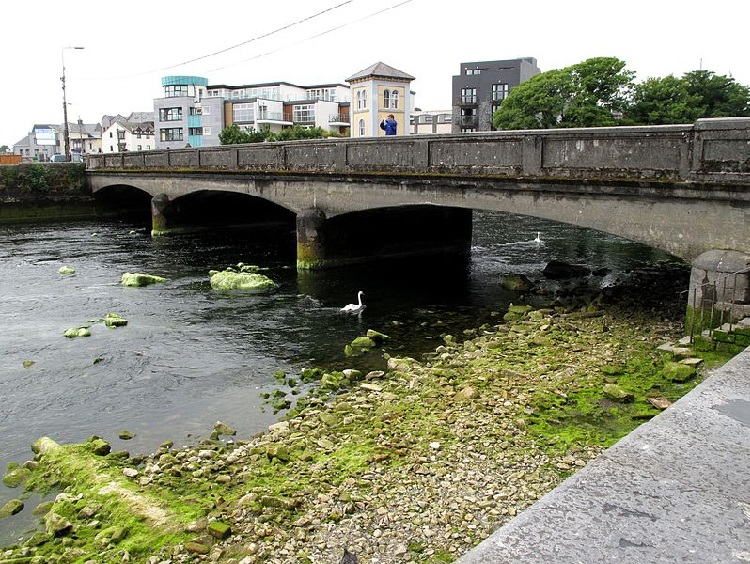Out Here | 1 | Between the Postcards
When the tide comes in the river runs deep and fast. Rushing beneath Galway’s Wolfe Tone Bridge and out past Spanish Arch to become the Atlantic. The ribbons are tied to the railings that face upriver, against the flow. Dashes of colour that grow frayed in the rain and tattered in the wind. Some have dedications written down their length – names, dates, a last goodbye. And others speak without any words. The wind whistles through them and that says enough.
In memory of their beloved who took their own lives here, those left behind tied the ribbons to the bridge’s rails. Where the homeless sit staring up at the busy pedestrians staring down at their iPhones. Who move past. Headed for the Claddagh on the west bank or Quay Street on the east. Crossing the bridge between Galway’s two postcard-perfect quarters. The snapshots of Ireland the tourists take home with them.
But no one lives in a postcard. And between the picturesque scenes is a place’s reality: The little struggles and wars and people. The stuff of folk-legends.
And on Wolfe Tone Bridge the hard truth at the core of those legends is revealed. It is a truth that needs to be confronted, not hushed up. As was done until 1993 – only 26 years ago – when suicide was decriminalised. Though even that could not erase the stigmatisation that still haunts us. The belief that mental illness is a shame, something to hide.
On 7 October, 2017, St. Patrick’s Mental Health Services published a survey on their website. They found that 64% of Irish people “believe that being treated for a mental health difficulty is seen as a sign of personal failure.” It is an old, dated notion – that mental illness is a stain on our reputations. Yet it still runs through our psyche. Like a stretched-thin nerve.
Ireland lives by the gospel of what the neighbours think. The unwritten word that enshrines this country’s values and ways. Today a winter sun shines on Wolfe Tone Bridge. It moves across the sky, descending to the horizon from its noonday apex. Before it comes to rest on the distant lip of the Atlantic and the pubs start to fill up. People spill out of the doorways, their cigarette smoke and chat drifting to the sky. And somewhere among them there are people too afraid of the others’ whispers to speak out. Now they are almost invisible. Indistinguishable from the smiles and laughter that pack the barrooms. They are part of the postcard.

The ribbons on the bridge however are not. For they speak a truth that we do not want to admit. Even though it has been confirmed by undeniable numbers. According to the Central Statistics Office there was more than a suicide a day in 2017 – a total of 392. Juxtapose that figure against another from the St. Patrick’s survey – that 73% of Irish people “believe society views those who receive in-patient care for mental health difficulties differently” – and our own frightening image emerges from the numbers. To fix us with a gaze we cannot meet.
So we turn away. Too afraid to look our reflection in the eye. In case we find something in it that the village, and ourselves, do not like. Because we would rather see the postcards than the mirror. For the postcards are prettier. And they cradle our reputation in their frozen moments.
Comic-prophet Lenny Bruce said “the truth is what is.” Everything else is “What should be a terrible lie someone told the people long ago.” By ignoring the facts and figures and ribbons, Ireland moves forward with its head buried in that “what should be.” Mental illness and suicide are old, universal problems. They have been there throughout our history. And they will follow us into the future. No matter how deep we bury our heads, we cannot outrun what lurks in their corners.
Featured Image Source: James Fleming
